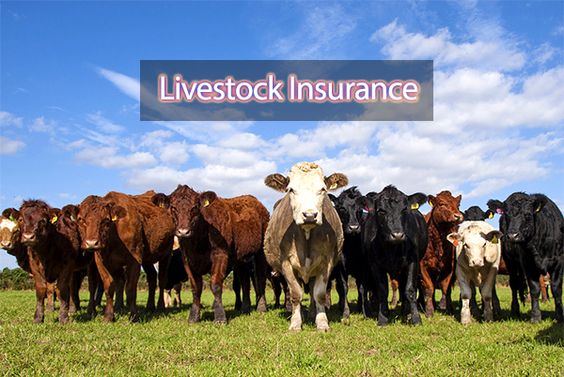
In our previous post, we have talked about what livestock insurance is. So, as we now know what it means by livestock insurance, today, let’s know about the Livestock Insurance Scheme in India. A typical cattle owner in our country is a small farmer who owns one or two cattle. Farmers maintain livestock as part of the mixed farming system of crop and livestock production.
Animal farming is an important pillar of the Indian economy, especially the rural economy. Most of our country is the poor farmer of small or marginal farmers. The main means of livelihood for them is animal farming, they on cattle of a good race and in such cases if there is a sudden death of cattle, they have a great loss and it becomes difficult for them to nurture their family.
Many times animals become victims of premature death and due to lack of insurance, the livestock produces financial losses. In such a way, the livestock insurance scheme is a boon for them.

What Is Livestock Insurance Scheme In India?
Table of Contents
Livestock Insurance Scheme is a Centrally Sponsored Scheme which was implemented in the 100 selected districts of the country as an experiment in the year 2007-06 of the year 2005-06 and 2006-07 and 11th Five Year Plan of the 10th Five Year Plan.
Now, this scheme is being run on a regular basis throughout the country. The Livestock Insurance Scheme was started with two objectives, to make the first farmers and livestock farmers safe from the loss due to the death of animals and to make the other livestock popular with the utmost aim of quality improvement of their products.
Under this scheme, the insurance of domestic/hybrid cattle and buffaloes is done at their maximum current market price and the premium of insurance is up to 50 percent. The full cost of the grant is borne by the Central Government.
The benefit of the grant is to get a maximum of two cattle per beneficiary for a maximum of three years policy. This scheme is being implemented by the concerned State Livestock Development Board in all the states except Goa.

Selection Of Beneficiaries In Livestock Insurance Scheme
The benefit of grant is restricted to each beneficiary of two animals and one animal is insured for a maximum of 3 years. Farmers will be encouraged to take a policy of three years, which is useful in getting the real benefit of insurance when natural disasters like cheap and flood and drought occur.
An animal is insured on its maximum market value. The market value that is insured is done by the beneficiary, authorized veterinarian and insurance agent.
NOTE:
However, if a farmer wants to take a policy of fewer than three years, then he is given that too.

Animal Listed In Livestock Insurance Scheme:
Country / Horticulture will come under the periphery of cattle and buffalo scheme. The following animals have been included in this insurance scheme run by the Government of India.
- Milk animals
- Animals carrying loads like horses, donkeys, mules, camels, bulls, buoys, etc.
- These small animals have been included in sheep, goat, pig, rabbit, and yak
- Apart from milking and feeding buffaloes in milk; pregnant cattle, which have given birth to at least a calf, will be included
NOTE:
Such cattle that have been covered under any other insurance scheme or any other scheme will not be included in this scheme.
Recommended Articles :-
- Do I Need To Buy Identity Theft Insurance?
- How To File Fire Insurance Claim For A Hassle-Free Settlement?
- Should I Get Renters Insurance For Fire & Theft Cover
- What Is Homeowners Insurance Cover in India?
- Importance Of Fire Insurance In India
- What Is Theft Insurance & Its Types?

Identification Of Insured Animals Under Livestock Insurance Scheme:
At the time of the claim of insured animal insured, it must be identified in a fair and unique manner. Therefore marking with a yellow patch in the ear should be secured in every possible manner. When taking the policy, the traditional marking or recent microchip technology should be used in the ear.
The cost of setting up an identification mark is borne by the insurance company and the responsibility of maintaining it is of the respective beneficiaries. The nature of the marking and its content is selected by the consent of both the insurance company and the beneficiary.

Is Change Of Ownership In The Validity Period Of Insurance Possible?
In case of sale of the animal or other types of transfer, if the term of insurance policy has not expired, then the benefit of the remaining period of the insurance policy will be transferred to the new owner. The manner of livestock policy and the necessary sales letters for the fee and transfer should be decided by the insurance company only at the time of the contract.

Ministry of Agriculture: Livestock Insurance Scheme Details:
Check out the Livestock Insurance Scheme quick details below. Here is a quick glance at the Livestock Insurance Scheme:
|
Livestock Insurance Scheme Details |
|
| Particulars |
Description |
| Scheme Name | Livestock Insurance Scheme |
| Sponsored by | Central Government of India |
| Beneficiaries | Community / Individual / Family |
| Other Beneficiaries | Farmers (small / large / marginal) & Cattle Rearers |
| Benefit Type | Subsidy, Material, Others |
| Eligibility criteria | Farmers (small / large / marginal) & Cattle Rearers having the high yielding and hybridized buffaloes and cattle. |
| How to Avail | Need to contact the Dept. of Animal Husbandry, Dairying & Fisheries |